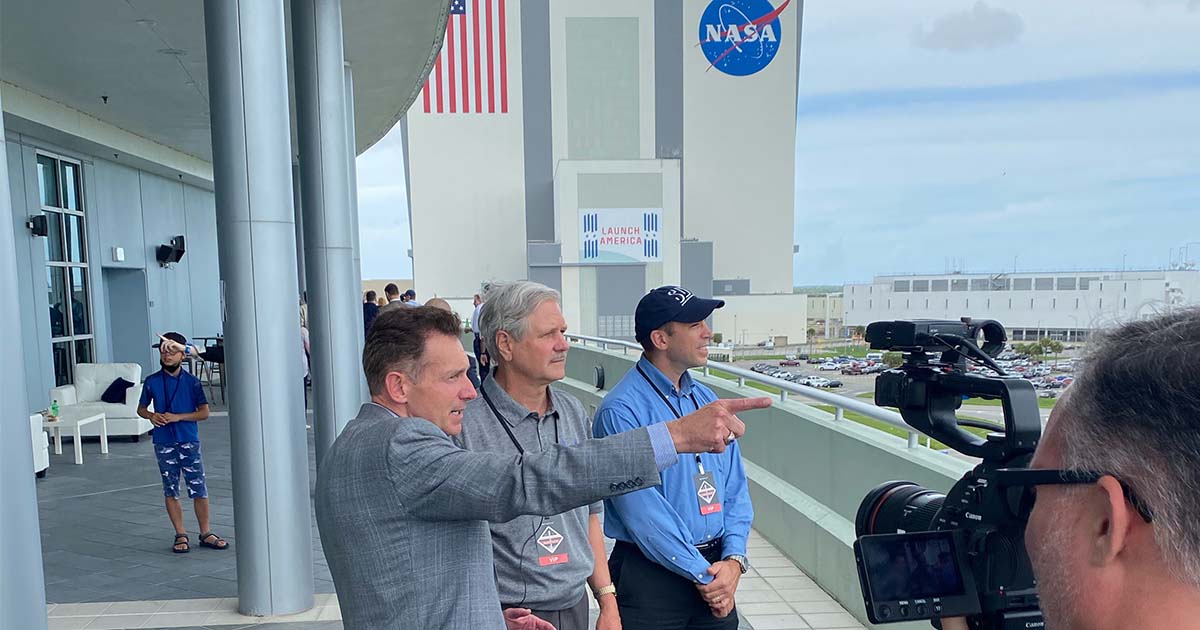Source: United States Senator for North Dakota John Hoeven
Senator Joined SpaceX and SDA Directors at Cape Canaveral for Launch Prep, Highlighting Importance of LEO Mission Milestone & Start of MQ-9 Laser Communications Project
CAPE CANAVERAL, FLA. – Senator John Hoeven today announced that the launch of SpaceX’s Transporter-2 releasing Space Development Agency (SDA) satellites is central to operations that Hoeven has been working to advance in North Dakota. The SpaceX rocket included five SDA satellites, two from General Atomics, an anchor tenant at Grand Sky Technology Park, which will be used to develop laser communication systems enabling low-Earth orbit satellites to communicate with unmanned aerial systems.
Hoeven was at Cape Canaveral yesterday with SDA Director Derek Tournear and SpaceX Senior Director Gary Henry and reviewed the preparations leading-up to the launch of the satellites. The launch was postponed yesterday only seconds from launch due to a plane entering the airspace, and Hoeven had to return to North Dakota for meetings to address the historic drought faced by agriculture producers.
The senator said the satellites are a key part of ensuring that the U.S. wins today’s race in space and an important aspect of his efforts to develop operations in North Dakota, including:
- Low-Earth Orbit (LEO) Satellites – The five satellites launched today will fly in LEO and be used to demonstrate the capabilities of a planned, broad network of satellites, which will serve as the backbone for all U.S. military communications across the globe.
- Hoeven is working to secure funding for a new space networkingcenter in Grand Forks that will tie into the LEO mission and recently hosted SDA Director Dr. Derek Tournear in North Dakota to review these efforts.
- The mission in Grand Forks will not only support SDA operations, but also has the potential to strengthen the intelligence, surveillance and reconnaissance (ISR) missions in the region and provide new opportunities for research and education at the University of North Dakota.
- Laser Communications Demonstration – Four of the satellites will support laser communications, both satellite-to-satellite and satellite-to-unmanned aircraft.
- Of these, the two Laser Interconnect and Networking Communication System (LINCS) satellites will demonstrate laser communications between satellites and MQ-9 Reaper unmanned aerial systems (UAS).
- The LINCS demonstration is supported by a $6 million award from SDA to General Atomics that Hoeven announced last month.
- Utilizing lasers, rather than radio frequencies, enables transmissions between satellites and unmanned aircraft to use less power and be more secure against detection and interference.
- These capabilities could be used to enhance the MQ-9 mission flown by the North Dakota Air National Guard’s 119th Wing in Fargo.
“Today’s launch is an exciting milestone that takes our nation to the next chapter in the race in space. America needs to win this race once again, and these satellites will help ensure Grand Forks will play a big role in this essential national security effort,” said Hoeven. “The prototype satellites being released by SpaceX’s Transporter-2 are a critical step in the LEO satellite mission that we are bringing to Grand Forks as well as the laser communications award we helped secure between General Atomics and the SDA. These efforts will ultimately improve the support we provide to our warfighters, ensuring faster and more effective communications that are resistant to interception and disruption.”
-###-
